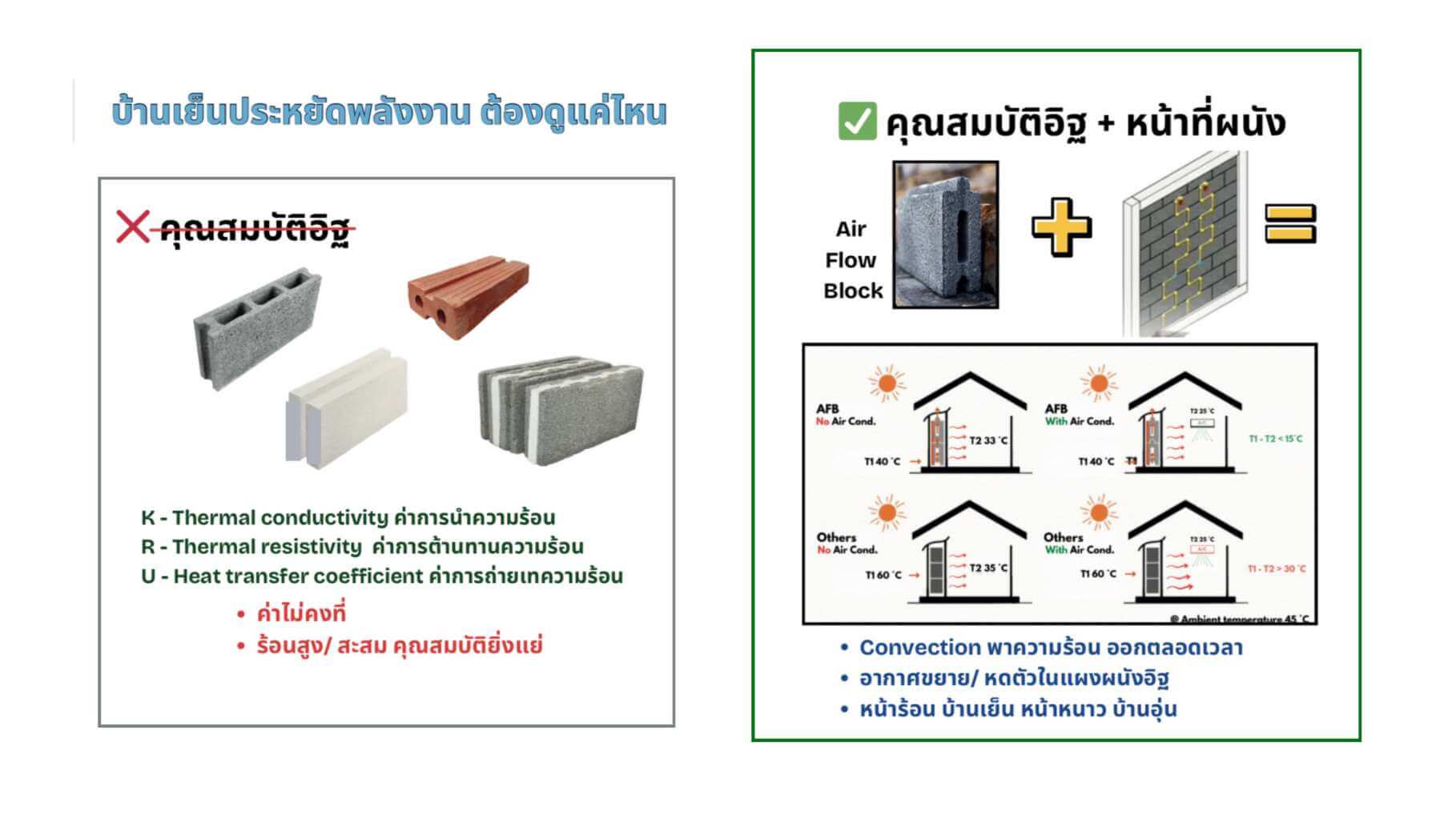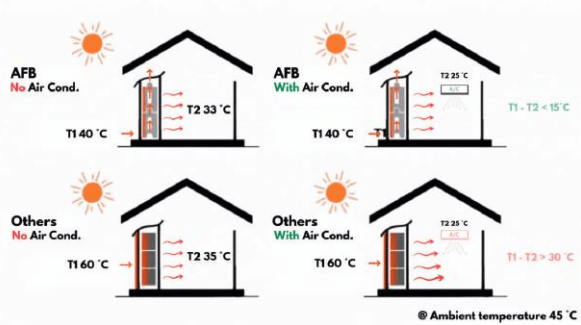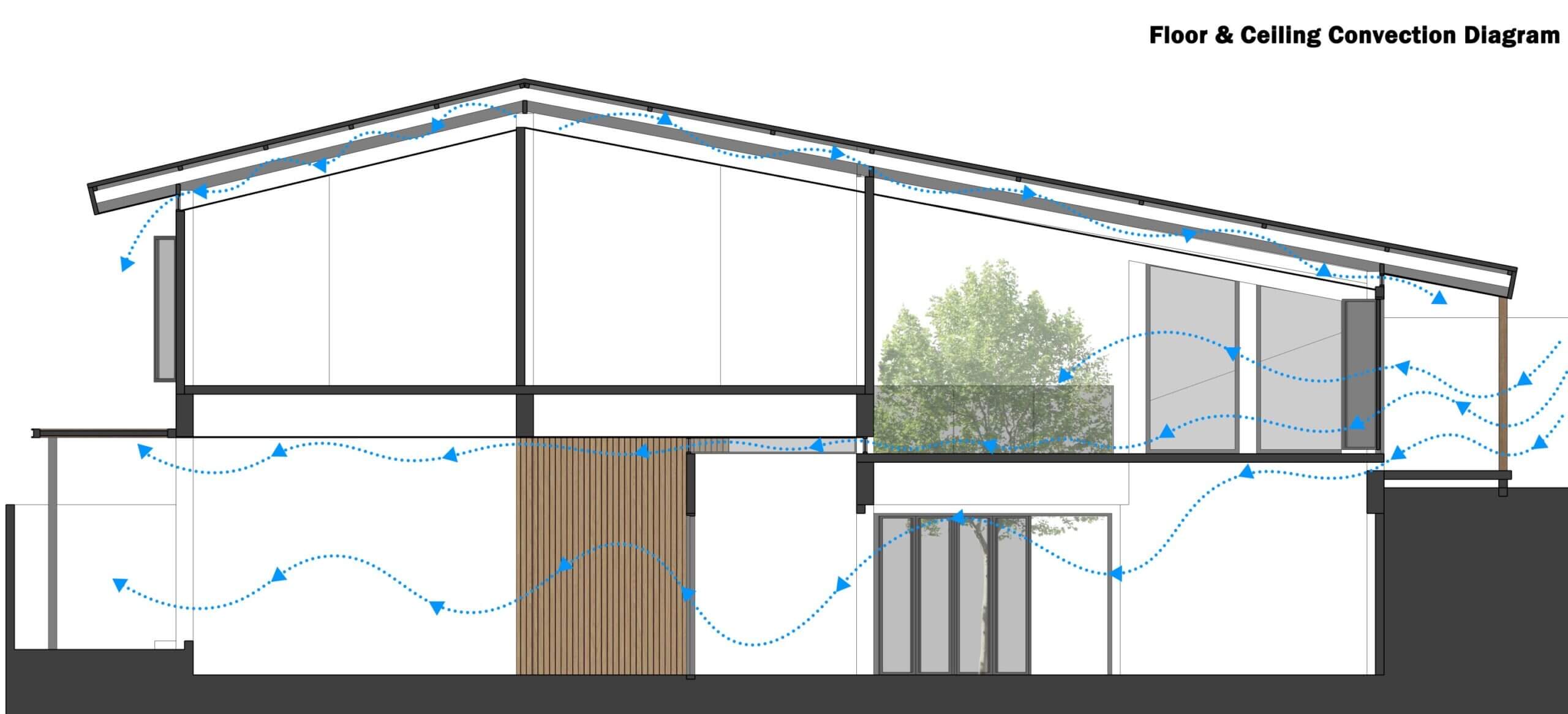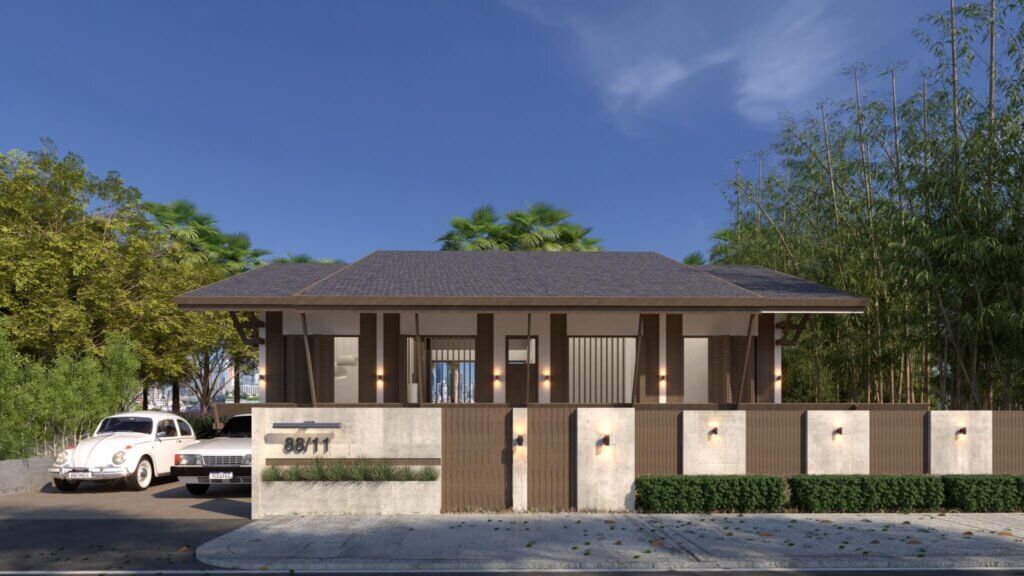First, let’s understand the correct concept of energy saving for houses or buildings. Generally, the understanding of energy saving for a “house” refers to the energy savings of “bricks” and depends only on the properties, K (Thermal conductivity), R (Thermal resistance), and U (Heat coefficient) values. This is a common misconception (X), as these conditions apply only to the specific materials used for the “brick” or “wall” in question.
When it comes to protecting the temperature within a house or building, it’s necessary to consider the “function” of the materials as well. Energy saving for a “house” must take into account the following factors:

1. Evaluation from the “Characteristics” of “Bricks” as Specific Properties
Evaluation based on “Characteristics” assesses the material’s ability as an “insulator”, which shows how easily or difficultly heat can pass through the material used in bricks or walls. This characteristic can immediately tell us which material can better protect against heat entering the house. However, it does not tell us about the energy saving of the house or building.
2. Evaluation from the “Function” of Being a Wall
Evaluation based on the “Function” looks at how the materials, in the form of walls, contribute to the protection from heat within the house or building. The factors that impact this are as follows:
2.1 The “Heat Accumulation” of the brick or wall. This is determined by the equation Heat flux Q = KA (T1-T2)/L, where K (Thermal conductivity), A (Area), T1-T2 (temperature difference), and L (Thickness) are factors. From this, we can see that heat accumulation depends on the value of (T1-T2) in two cases:
Case 1: When there is no air conditioning and the temperature “decreases” during the “evening” period, the temperature difference on both sides is “small,” causing the heat accumulated within the brick or wall to stay for a longer period. The higher the insulation value of the brick, the longer it holds heat, thus making the house cooler slowly. Alternatively, if the air conditioning is turned on, it will require more energy than usual, as seen in Case 2.
Case 2: When there is air conditioning in a “hot” environment, such as the afternoon, the temperature difference between the inside and outside will be “high” (for example, room temperature around 45°C, and the outside wall surface temperature is around 50-55°C). When compared to the air conditioning temperature of 25°C, the value of (T1-T2) is high, around 25-30°C. This causes the heat flux from outside to easily pass through the wall, meaning the air conditioning will need to use more energy than normal.

2.2 Heat dissipation when not at home. This happens when we leave the house and “close” all windows and doors, causing heat to accumulate inside. If the air conditioning is turned on later, it will consume more energy than usual.
2.3 When heat increases and accumulates more, the material’s insulation properties (K, R, and U values) will degrade from scientific principles, as these values are “not constant” and worsen as the temperature increases and heat accumulates more.
Heat flux – AFB อธิบายภาพ 6:30 นาที
Why does Air Flow Block energy-saving brick and Natural Passive House (NPH) design work more effectively in combining both “Characteristics” and “Function” compared to other types of bricks and walls? The reasons are as follows:
1. It uses the principle of heat convection, allowing the material’s characteristics to stay close to its original values since it continuously dissipates heat when the temperature is higher than 20°C. This principle also contributes to energy savings in the following ways:
- 1.1 It dissipates heat from both the inside and outside of the wall, so when the house is closed, the heat accumulation is reduced.
- 1.2 It effectively reduces the temperature difference (T1-T2) between the inside and outside because the wall acts as a “double layer,” shifting the “reference point” of the outside temperature to the inside wall, thus significantly reducing energy consumption when using air conditioning.
2. The convection principle works inversely to bricks that rely on insulation properties. As temperature increases, insulation-based bricks store more heat and their efficiency decreases. However, for AFB bricks, the hotter it gets, the more pressure builds up, which helps dissipate heat more efficiently.
3. Since AFB bricks are not made from insulating materials, they dissipate heat faster and more efficiently than bricks made from insulating materials. This is especially beneficial in the evening when temperatures drop. Walls made from AFB bricks release heat faster than insulating material bricks (according to tests, AFB bricks are 4 hours faster than lightweight bricks).
All the above points summarize the energy-saving aspects, but there are many other benefits as well, such as soundproofing, low water absorption (only 10%), strength, anchoring, cost reduction, and more.
Energy saving evaluation from the use of Air Flow Block energy-saving bricks and Natural Passive House (NPH) is based on the following data and assumptions:
- Houses or buildings of approximately 250 sq.m per unit
- Estimated number of houses or buildings at about 35,000,000 sq.m per year or about 140,000 units per year
- Substitution of 100% of lightweight bricks & 50% of regular concrete blocks based on annual usage
- Reduction of cement use by 10% per house
- Electricity savings from air conditioning by reducing the temperature from the “characteristics” of bricks by 3-30% compared to other types of bricks
- Electricity savings from air conditioning from the “function” of usage at about 10% of the normal electricity cost
- Electricity savings from heat accumulation in walls during the evening period
- Electricity cost estimates for houses with air conditioning, where 60% of the electricity is consumed by air conditioning, with the remainder used by other appliances
- Evaluation based on typical houses of 3 bedrooms, 2 bathrooms, with 3 air conditioners per unit
- Electricity cost is approximately 6,000 Baht per house per month, with 60% (approximately 3,600 Baht) for air conditioning
To simplify, electricity savings of 25% from air conditioning costs are estimated. Therefore, this would save approximately 900 Baht per month on electricity for air conditioning.
Calculation #1: Annual Electricity Savings from AFB Energy-saving Bricks
- Number of houses or buildings: 140,000 units per year
- Electricity savings from air conditioning: 900 Baht per house per month or 10,800 Baht per year
- Total electricity savings: 1.5 billion Baht per year
Calculation #2: Annual Electricity Savings from NPH Houses
- Additional estimated savings of 20% from Calculation #1: 300 million Baht per year
Calculation #3: Total Electricity Savings
- Estimated total: 1.8 billion Baht per year

Economic Impact
Investment Evaluation for the Use of Air Flow Block Energy-saving Bricks and Natural Passive House Energy-saving Homes
- Cost of using Air Flow Block Energy-saving Bricks: Since these bricks have a lower cost per square meter compared to other types, there is no additional investment, and costs are reduced by approximately 30,000 Baht per house.
- Costs of using the Natural Passive House system are as follows:
-
- Licensing Fee: 10,000 Baht per house
- Piping and related equipment cost: 5,000 Baht per house
- Trenching for pipe installation: 3,000 Baht per house
- Operating costs: 5,000 Baht per house
Total: 23,000 Baht per house
Investment Break-even Point Evaluation
It can be seen that this system does not involve “additional investment or costs” in constructing a house or building by using Air Flow Block Energy-saving Bricks, but instead reduces costs by approximately 30,000 Baht per house. Additionally, the investment in implementing the Natural Passive House system is only 23,000 Baht per house, which is still lower than the cost reduction from using Air Flow Block Energy-saving Bricks.
This evaluation, therefore, cannot measure investment indices such as IRR (Internal Rate of Return), NPV (Net Present Value), or ROI (Return on Investment).
In conclusion, this evaluation is an assessment of the use of innovation with no additional investment but benefits only from energy savings.
Environmental Impact
Environmental and Social Aspects
- Reduces electricity consumption and minimizes the use of resources that impact the environment.
- Reduces cement usage, directly addressing global warming, and allows participation in the Carbon Footprint program for additional benefits to entrepreneurs.
- Agricultural waste or non-hazardous industrial waste residues can be used as ingredients in producing Air Flow Block bricks, which are part of the NPH system. This helps reduce agricultural and industrial waste disposal.
Work Quality
- The NPH system is still in the development and testing phase. However, the results from testing real houses are close to the calculations, indicating the potential of the NPH system’s design and calculations.
- Owners of NPH homes report a very high level of satisfaction, feeling comfortable and cool even when the outside air is warm (without air conditioning), and warm inside the house when the outside air is cold.
- The quality of the Air Flow Block brick walls, which are part of the NPH system, has been referenced by many real customers, demonstrating the wall’s quality and its ability to maintain the internal temperature of the house.
Potential for Expansion
Since the NPH energy-saving house is considered an innovation with no additional investment, and with reduced costs, it allows those with low to medium income to easily access the cool, energy-saving house innovation, especially for buildings no taller than three stories. Additionally, the production of Air Flow Block energy-saving bricks is a small-scale investment (SME), which facilitates wider investment distribution. The application of this innovation can be expanded to various building types, such as:
- Buildings not exceeding three stories
- Multi-purpose buildings
- Resorts and accommodations that require energy savings
- Buildings over four stories, which could incorporate other systems, such as high-pressure cooling systems, among others.
Credibility
- The Air Flow Block Energy-saving Bricks have passed energy-saving tests by King Mongkut’s University of Technology North Bangkok.
- Air Flow Block Energy-saving Bricks were tested according to Thai Industrial Standards (TIS) 58, at two universities: Suranaree University of Technology and Khon Kaen University.
- The Natural Passive House system has been tested with real houses, and test results have been published in various media outlets.

